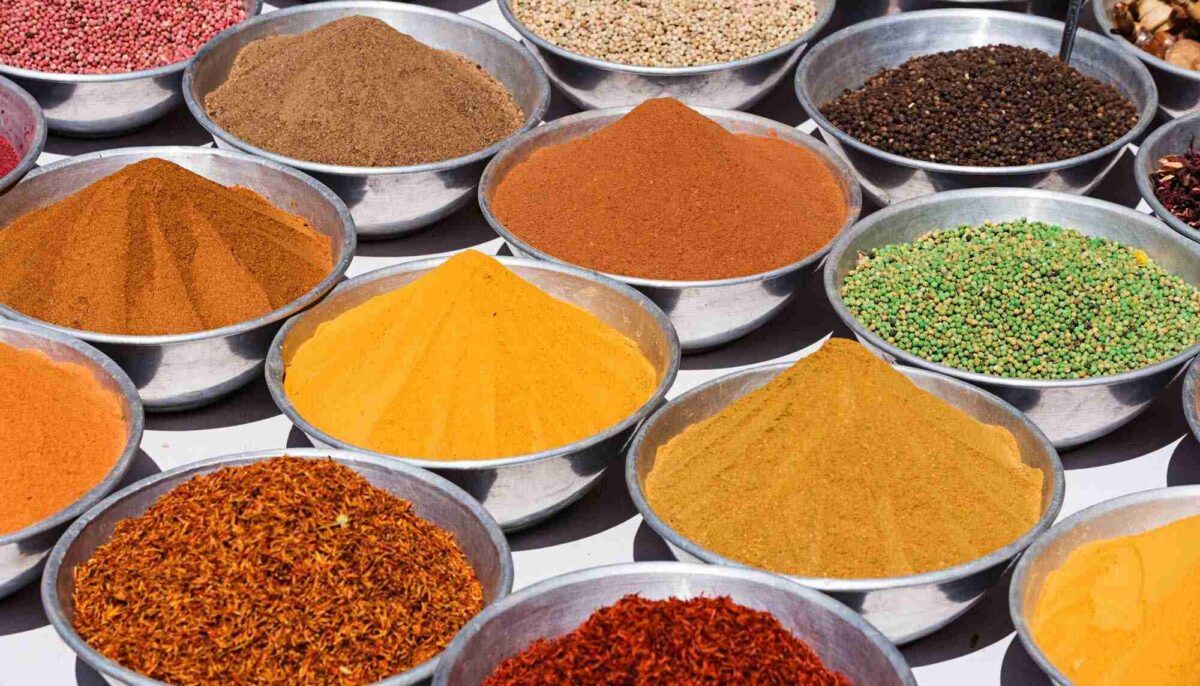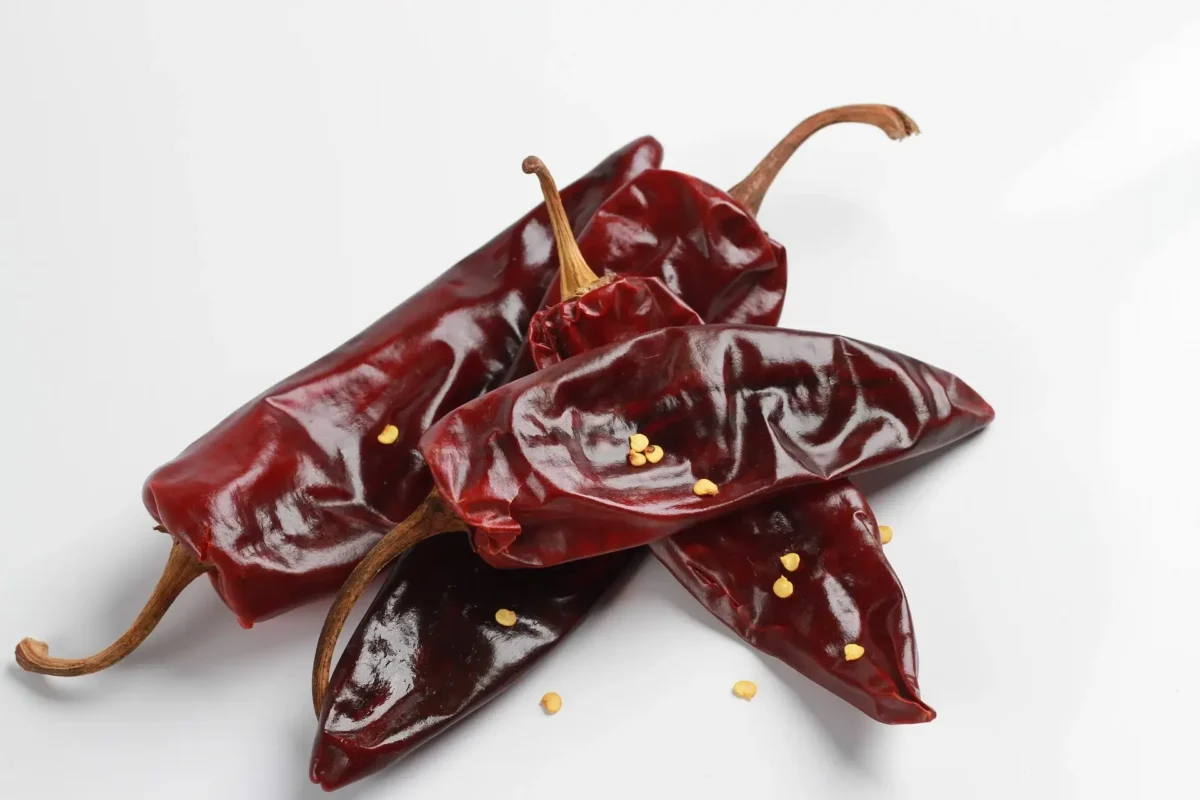In the realm of herbs, few possess the charm, versatility, and aromatic allure quite like rosemary (Rosmarinus officinalis). With its rich history dating back centuries and its myriad culinary, medicinal, and ornamental uses, rosemary stands as a beacon of herbal excellence. In this comprehensive guide, we delve into the depths of rosemary, exploring its diverse forms, benefits, and cultivation practices. Whether you’re a seasoned gardener, an aspiring herbalist, or simply a lover of all things natural, prepare to be enchanted by the captivating world of rosemary.
Table of Contents
Unveiling Rosemary: A Closer Look
The Essence of Rosemary
Rosemary, with its needle-like leaves and subtle blue flowers, is an evergreen shrub belonging to the mint family, Lamiaceae. Native to the Mediterranean region, this fragrant herb has traversed continents and cultures, leaving its indelible mark on culinary traditions, medicinal practices, and horticultural landscapes worldwide.
Exploring Varieties
1. Tuscan Blue Rosemary
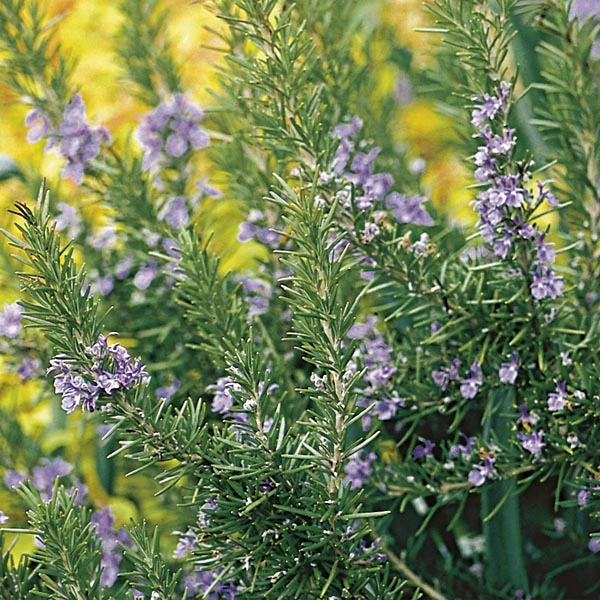
Tuscan Blue Rosemary is a robust and vigorous variety of the Rosemary plant, characterized by its upright growth habit and intense blue-green foliage. Native to the Mediterranean region, it thrives in sunny, well-drained soil and is prized for its ability to withstand drought and poor soil conditions. Its needle-like leaves exude a fragrant aroma, which intensifies when crushed or bruised, making it a favorite for culinary purposes.
Tuscan Blue Rosemary is often used to flavor meats, poultry, vegetables, and bread, adding depth and complexity to a wide range of dishes. Beyond its culinary applications, this resilient herb also serves as an ornamental plant, providing year-round interest with its attractive foliage and delicate blue flowers. With its versatility and beauty, Tuscan Blue Rosemary remains a cherished addition to gardens, kitchens, and landscapes worldwide.
2. Arp Rosemary
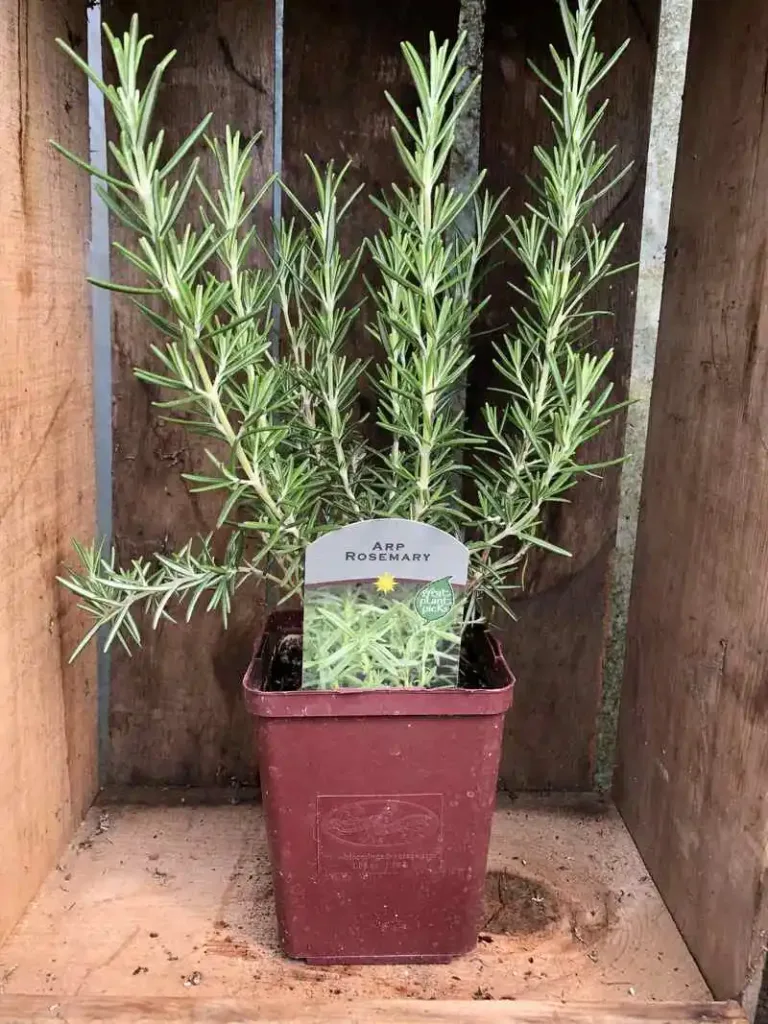
The Arp Rosemary plant, scientifically known as Rosmarinus officinalis ‘Arp’, is a perennial herb prized for its aromatic foliage and culinary uses. Native to the Mediterranean region, Arp Rosemary is characterized by its needle-like leaves that emit a strong, pine-like fragrance when crushed or brushed against. It typically grows in a bushy form, reaching heights of up to three feet and spreading about the same width.
Arp Rosemary is favored by gardeners and chefs alike for its resilience, as it thrives in well-drained soil and full sunlight, making it suitable for various garden settings and climates. This variety is known for its ability to withstand colder temperatures better than other rosemary cultivars, making it a popular choice in regions with harsh winters.
In addition to its ornamental value, Arp Rosemary is widely used in culinary applications, adding flavor and aroma to a variety of dishes such as meats, vegetables, soups, and bread. Its fragrant leaves can also be dried and stored for later use in cooking or for making infused oils and vinegars.
Beyond its culinary uses, Arp Rosemary is believed to have medicinal properties and has been historically used in herbal remedies for its purported benefits, including improving digestion, enhancing memory and concentration, and providing relief from headaches and muscle pain.
Overall, the Arp Rosemary plant is cherished for its versatility, resilience, and aromatic qualities, making it a staple in both the garden and the kitchen.
3. Prostrate Rosemary (Rosmarinus officinalis prostratus)

Prostrate rosemary (Rosmarinus officinalis ‘Prostratus’) is a low-growing herbaceous plant known for its aromatic foliage and versatility in gardens. Unlike its upright counterparts, this variety cascades gracefully, making it ideal for ground cover or cascading over walls and containers.
The plant features small, needle-like leaves that emit a fragrant aroma when brushed against or crushed, adding sensory delight to outdoor spaces. Its evergreen nature ensures year-round interest in the landscape, as the foliage maintains its vibrant green color even during colder months.
Prostrate rosemary thrives in well-drained soil and full sunlight, making it suitable for various climates and garden conditions. It is relatively drought-tolerant once established, requiring minimal watering once roots are established. Additionally, it is resistant to many pests and diseases, making it a low-maintenance addition to gardens.
Beyond its ornamental appeal, prostrate rosemary is also valued for its culinary uses. Its aromatic leaves can be harvested and used fresh or dried to flavor a variety of dishes, from meats and vegetables to bread and sauces.
Overall, prostrate rosemary offers both aesthetic and practical benefits, making it a popular choice for gardeners seeking a versatile and resilient herbaceous plant for their outdoor spaces.
4. Coastal Rosemary

Coastal rosemary (Westringia fruticosa) is a hardy and versatile evergreen shrub native to the coastal regions of Australia. It is a popular ornamental plant valued for its attractive foliage, delicate flowers, and low maintenance requirements.
Coastal rosemary typically grows to a height of 3 to 6 feet, with a spreading habit and dense, aromatic foliage of narrow, gray-green leaves. Its small, white to pale lavender flowers bloom profusely in spring and sporadically throughout the year, adding charm to garden landscapes. This plant thrives in a variety of conditions, including coastal environments, sandy soils, and drought-prone areas, making it well-suited for coastal gardens and Mediterranean-style landscapes.
Coastal rosemary is also known for its tolerance to salt spray and wind, making it a resilient choice for seaside gardens. With minimal pruning needs and excellent drought tolerance, coastal rosemary is a popular choice for gardeners seeking a low-maintenance and visually appealing addition to their outdoor spaces.
5. Trailing Rosemary

Trailing rosemary (Rosmarinus officinalis ‘Prostratus’) is a low-growing, aromatic herb known for its cascading growth habit and fragrant foliage. Unlike the upright rosemary varieties, trailing rosemary has a prostrate growth pattern, making it an excellent choice for ground cover, hanging baskets, or cascading over walls and containers.
This evergreen herb features slender, needle-like leaves and produces delicate, pale blue flowers in spring and early summer, attracting bees and other pollinators to the garden. Trailing rosemary thrives in well-drained soil and prefers full sun exposure, making it suitable for Mediterranean climates. It requires minimal maintenance and is drought-tolerant once established.
Gardeners often use trailing rosemary for culinary purposes, adding its pungent flavor to various dishes. Its versatility, beauty, and adaptability make trailing rosemary a popular choice for both ornamental and culinary gardens, adding charm and functionality to outdoor spaces.
6. Creeping Rosemary
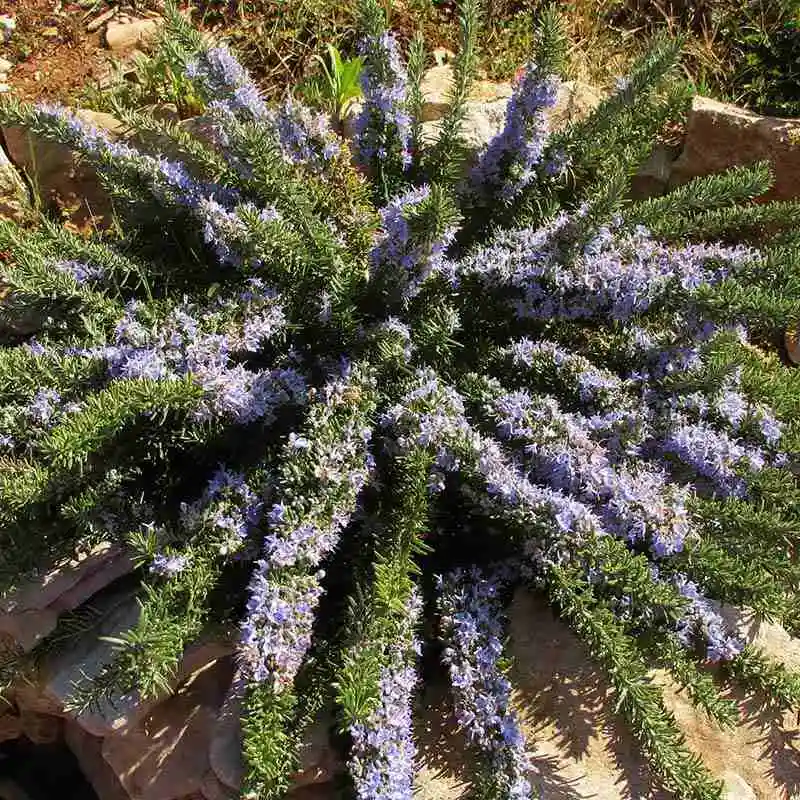
Creeping rosemary (Rosmarinus officinalis ‘Prostratus’) is a low-growing, evergreen herb prized for its aromatic foliage and ornamental value. Unlike the upright variety, creeping rosemary forms a dense mat of trailing stems that cascade gracefully over walls, containers, and slopes. Its needle-like leaves emit a fragrant aroma when brushed against or crushed, making it a popular choice for herb gardens, rockeries, and ground covers.
This plant thrives in full sun and well-drained soil, tolerating drought once established. Its cascading habit makes it ideal for softening edges or covering bare patches in the garden. Creeping rosemary produces small, pale blue flowers in spring, attracting bees and other pollinators.
With minimal maintenance requirements, this herb is easy to grow and is relatively pest and disease-resistant. Regular pruning helps maintain its shape and encourages bushier growth. Creeping rosemary is also suitable for culinary purposes, with its aromatic leaves adding flavor to a variety of dishes.
Overall, creeping rosemary is a versatile and attractive plant that adds beauty, fragrance, and functionality to garden landscapes.
Agri Club Rosemary Dried Leaf 100gm
Original price was: ₹250.₹185Current price is: ₹185.Chef Urbano Rosemary 40 g
₹150Dried Basil Leaves 1kg/35.27oz
Original price was: ₹1150.₹720Current price is: ₹720.Easygrow Dry Rosemary Leaves 100% Natural (200 gm) Herbal Tea For Hair Growth
Original price was: ₹350.₹155Current price is: ₹155.
The Multi-Faceted Uses of Rosemary
Culinary Delights
Rosemary’s culinary prowess knows no bounds. From savory dishes to sweet treats, its robust flavor and distinct aroma elevate culinary creations to new heights. Here are some popular culinary uses:
- Rosemary Infused Oils and Vinegars: A simple infusion of rosemary adds depth and complexity to oils and vinegar, perfect for dressing salads or drizzling over roasted vegetables.
- Rosemary Roasted Potatoes: Toss potatoes with fresh rosemary, olive oil, and garlic before roasting for a delectable side dish.
- Rosemary Infused Gin: Infuse gin with rosemary for a botanical twist on classic cocktails like the gin and tonic.
- Rosemary Honey: Drizzle rosemary-infused honey over cheese or use it to sweeten herbal teas for a delightful flavor fusion.
Medicinal Marvels
Rosemary has been revered for its medicinal properties since ancient times. Rich in antioxidants, including carnosic acid, it offers an array of health benefits:
- Rosemary Tea: Brewed from fresh or dried leaves, rosemary tea is lauded for its digestive benefits, respiratory support, and cognitive enhancement properties.
Revealing the Potency: The Magic of Rosemary Tea
- Rosemary Hair Tonic: Infuse rosemary leaves in apple cider vinegar to create a stimulating hair tonic that promotes scalp health and stimulates hair growth.
- Rosemary Tincture: A concentrated extract of rosemary, used to alleviate muscle pain, improve circulation, and boost cognitive function.
Unlock the Secret Benefits of Rosemary Essential Oil!
Ornamental Elegance
In addition to its culinary and medicinal uses, rosemary adds a touch of elegance to gardens and landscapes:
- Rosemary Topiary: Prune rosemary into decorative shapes to adorn gardens, patios, and entryways.
- Potted Rosemary: Ideal for container gardening, potted rosemary thrives on sunny windowsills, balconies, and terraces.
- Rosemary Hedge: Create a fragrant and visually appealing hedge by planting rosemary along garden borders or pathways.
The Ultimate Guide to Tamarind: History, Uses, and Benefits
Cultivating Rosemary: Tips and Techniques
Growing Conditions
Rosemary thrives in sunny, well-drained soil with good air circulation. Follow these guidelines for successful cultivation:
- Sunlight: Plant rosemary in a location that receives at least 6-8 hours of sunlight per day.
- Soil: Choose well-draining soil with a pH between 6.0 and 7.0. Sandy or gravelly soil is ideal for preventing root rot.
- Watering: Allow the soil to dry out between waterings to prevent root rot and fungal diseases.
- Pruning: Prune rosemary regularly to maintain its shape and encourage bushy growth.
Propagation
- From Seeds: Start rosemary seeds indoors in early spring, and transplant seedlings outdoors after the danger of frost has passed.
- From Cuttings: Take 4-6 inch stem cuttings from healthy rosemary plants, remove the lower leaves, and place the cuttings in moist soil or water until roots develop.
Harvesting and Storage
- Fresh Rosemary: Harvest fresh rosemary sprigs as needed by snipping them from the plant with sharp scissors or pruning shears.
- Dried Rosemary: Hang fresh rosemary sprigs upside down in a warm, dry place until they are completely dry. Store dried rosemary in airtight containers in a cool, dark place.
Rosemary: A Gift from Nature
In conclusion, rosemary’s versatility, fragrance, and myriad benefits make it a cherished companion in kitchens, gardens, and medicine cabinets around the world. Whether brewed into a soothing tea, infused into a savory dish, or admired for its ornamental beauty, rosemary continues to captivate hearts and minds with its timeless charm. Embrace the magic of rosemary and let its essence enrich your life in countless ways.
From culinary delights to medicinal marvels, from ornamental elegance to horticultural harmony, rosemary truly is nature’s gift to humanity—a fragrant reminder of the beauty and bounty that surround us.
So, the next time you stroll through a garden or savor a savory meal, take a moment to appreciate the humble yet extraordinary herb that is rosemary. Its presence enriches our lives in ways both subtle and profound, reminding us of the simple joys and enduring wonders of the natural world.

Rupesh Sagvekar is Content writer, Food blogger and owner of Manvik Foods, an online shop in Mumbai, India that specializes in selling high-quality dry fruits, nuts, berries, whole and powdered spices. Under the authority of Manvik Enterprises Organisation, Rupesh and his team believe that quality is of the utmost importance. They take great care to ensure that their products are verified, tested, and of the best possible quality. Rupesh’s goal is to make sure that every customer is satisfied with what they receive from Manvik Foods.
As an Amazon affiliate, Manvik Foods ships their products all over India, allowing customers from all corners of the country to enjoy their delicious and nutritious products. With Rupesh at the helm, Manvik Foods has become known for their commitment to quality, exceptional customer service, and passion for healthy, natural foods.





